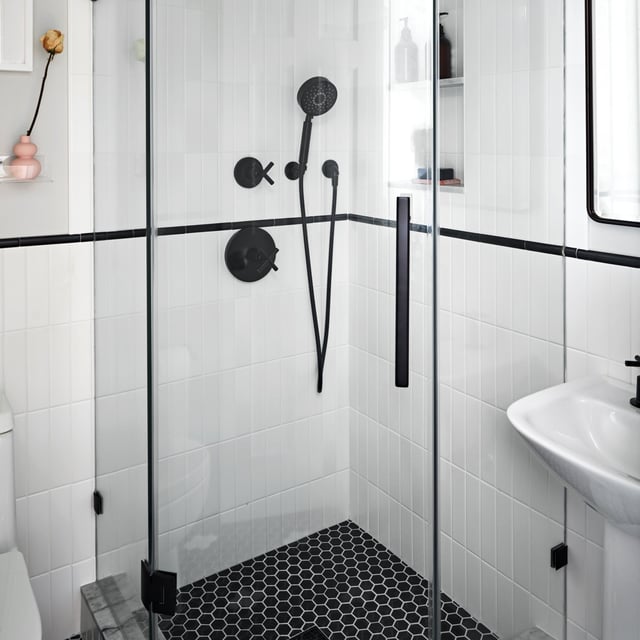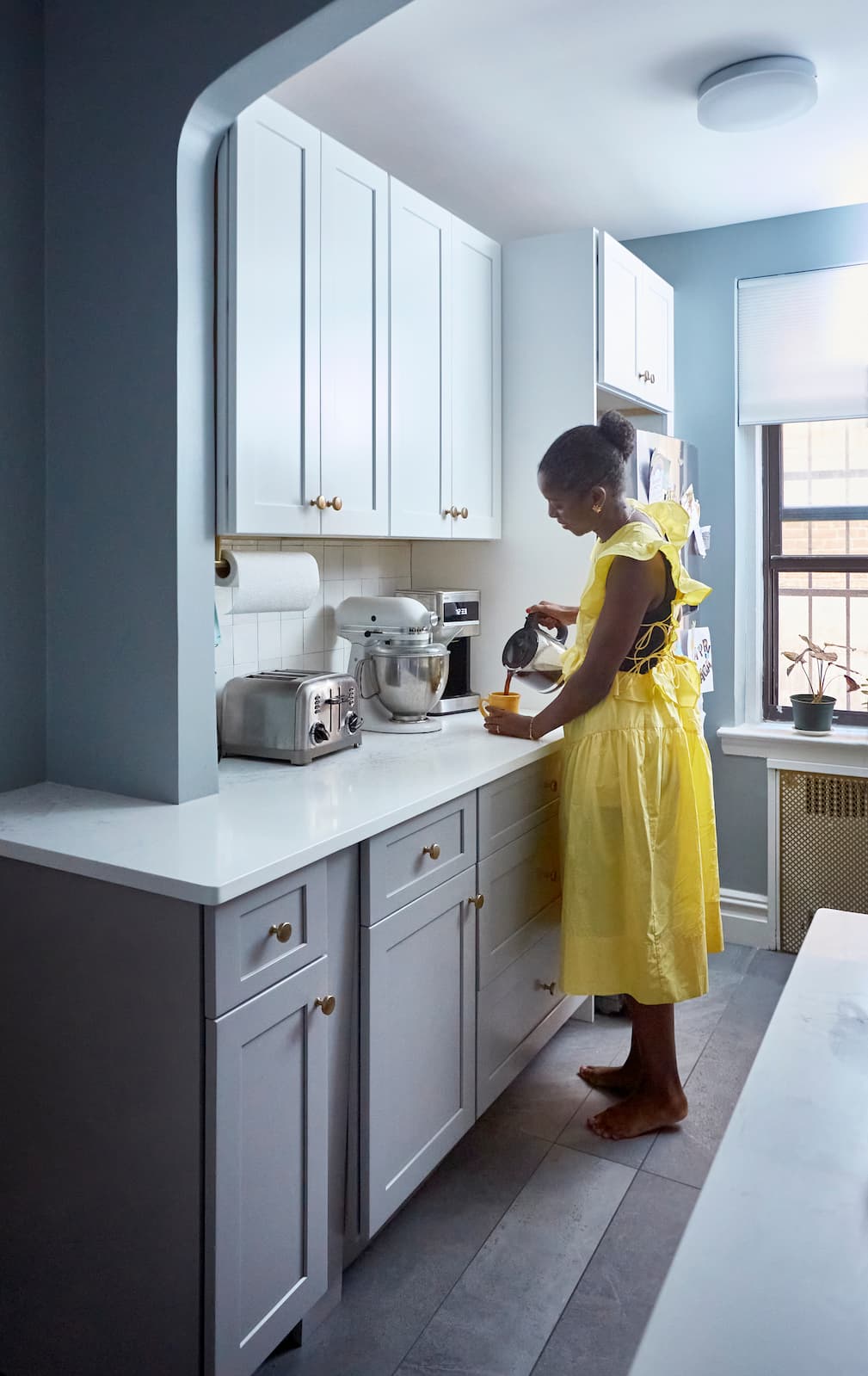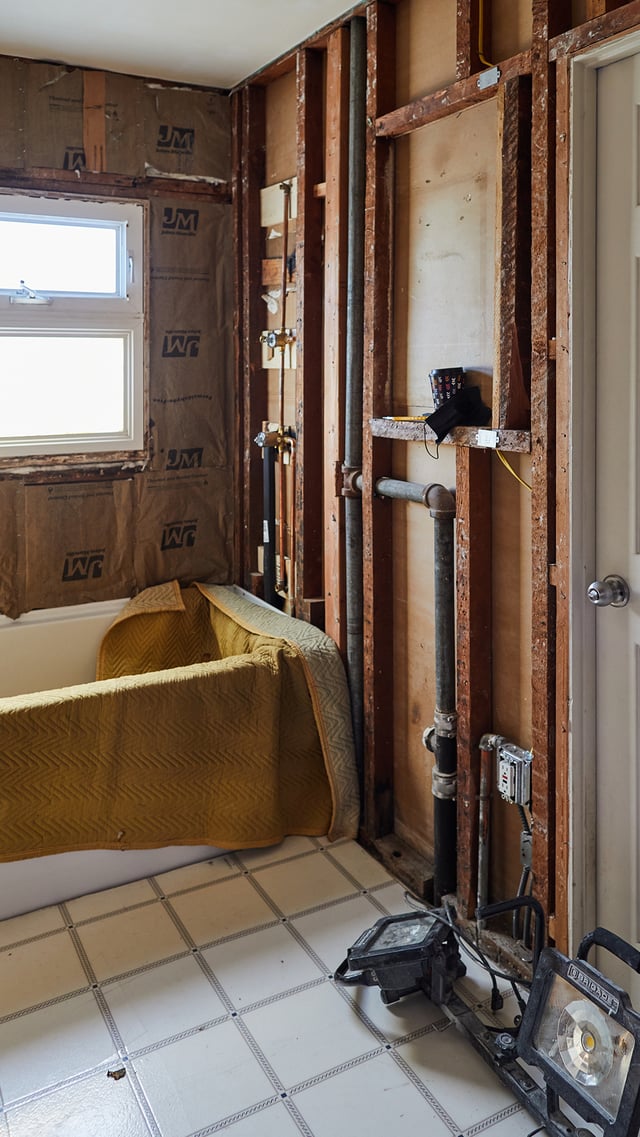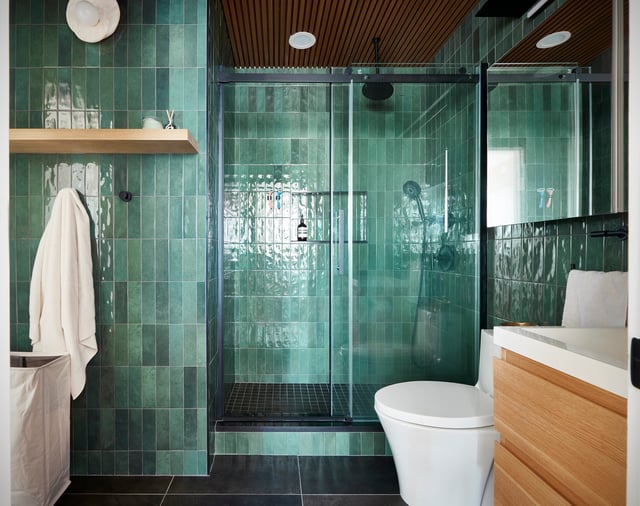
Contractors
Half Bathroom to Full Conversion: Costs, Permits & Designs
08.02.2025

In This Article
When planning a home improvement project, one of the first decisions you'll face is whether to renovate or remodel. Though these terms are often used interchangeably, they refer to different approaches with distinct costs, goals, and outcomes. Understanding the difference is essential to plan your project efficiently, avoid unnecessary expenses, and achieve your desired results.
In this article, we’ll break down what home renovation and home remodeling truly mean, compare their costs, ROI, project scopes, timelines, legal requirements, and environmental impacts, and help you decide which path is best for your goals.
Design a Home That’s Uniquely Yours
Block can help you achieve your renovation goals and bring your dream remodel to life with price assurance and expert support.
Get Started
A home renovation refers to the process of restoring or updating a home to improve its aesthetics or functionality, without changing the overall structure or layout of the space.
A home remodel involves altering the structure, form, or purpose of a home or room. Remodeling can include removing or adding walls, reconfiguring layouts, or converting the purpose of a room entirely.
|
Feature |
Renovation |
Remodeling |
|
Purpose |
Update and refresh |
Reconfigure or repurpose |
|
Scope |
Cosmetic |
Structural |
|
Layout Changes |
Rare |
Common |
|
Cost |
Lower |
Higher |
|
Timeline |
Shorter |
Longer |
|
Permit Requirement |
Rare |
Often required |
|
DIY Possibility |
High |
Lower (often needs pros) |
|
ROI Potential |
High (especially for minor updates) |
Variable (may be lower due to cost) |
|
Complexity |
Low to Medium |
High |
Home improvement trends have shifted dramatically over time. In the early 20th century, renovations were mainly functional—addressing aging infrastructure or post-war needs. Remodels were rare and considered luxury projects.
By the 1950s and 60s, as suburban housing developments surged, the desire for modern kitchens and bathrooms led to remodeling booms. The 1990s and 2000s emphasized open-concept layouts, custom cabinetry, and premium finishes.
In the 2020s, renovation and remodeling are increasingly driven by:
This evolution explains why many homeowners blend renovation and remodeling to update and reconfigure their living spaces simultaneously.
Know the Cost Before You Start

|
Project Type |
Renovation (Cost Range) |
Remodeling (Cost Range) |
|
Kitchen |
$10,000 – $30,000 |
$25,000 – $60,000+ |
|
Bathroom |
$6,000 – $15,000 |
$20,000 – $40,000+ |
|
Basement |
$5,000 – $15,000 |
$20,000 – $50,000+ |
|
Whole-Home |
$20,000 – $75,000 |
$75,000 – $150,000+ |
Always plan for:
Renovations often provide a better ROI because they involve lower costs. Key stats from national reports:
Remodels provide value mainly when solving functional issues or increasing usable space—like adding a second bathroom or finishing a basement. The improvement in potential value also depends on the specific nature of the remodeling, as explored in Kitchen Remodel ROI & Upgrades for High Resale Value.
Renovation is often the best choice when your home is already in solid structural condition and does not require major changes to its layout or framework. This makes it a cost-effective way to enhance your living space without the complexity of tearing down walls or altering floor plans.
If you are preparing to put your home on the market, renovating is a smart move. Simple upgrades—like refreshing paint, updating flooring, or modernizing fixtures—can significantly increase buyer appeal and boost your home’s market value.
A renovation is also ideal when you want to give your space a fresh, modern look without investing in an extensive remodel. Whether it's swapping out dated countertops or replacing worn carpets with sleek hardwood, renovations are perfect for achieving visual improvements on a budget.
Lastly, renovations are a practical solution for addressing cosmetic damage such as chipped paint, scuffed floors, or worn cabinetry. These surface-level fixes can dramatically improve the overall feel of your home and make it look newer and more polished.
Remodeling is the right path when your lifestyle has evolved and your current home no longer supports your needs. This could include accommodating a growing family, adding a dedicated home office, or creating better accessibility as you age in place.
If your home feels cramped, awkwardly laid out, or lacks functionality in key areas like the kitchen or bathroom, a remodel can reconfigure the space to improve flow, storage, and overall usability. It allows you to make significant structural changes that can dramatically enhance your quality of life.
You may also choose to remodel when you're aiming to create an open-concept layout—one of the most popular trends in modern home design. Removing walls to unify the kitchen, living, and dining areas can foster a more social and spacious environment.
Finally, remodeling is the ideal option if you plan to stay in your home for the long term and want a space tailored to your preferences and habits. Customizing the layout, materials, and features can make your home not only more functional but also more enjoyable to live in for years to come.
Understanding the legal requirements of your home project is crucial—whether you're renovating or remodeling. Building codes, zoning laws, and permit processes vary by city and state, so it’s essential to do your homework before starting any work.
In most cases, renovation projects do not require permits, especially if the updates are cosmetic in nature. For example, painting walls, replacing flooring, upgrading kitchen countertops, or installing new light fixtures generally falls outside of regulatory oversight.
However, there are important exceptions. If your renovation involves major systems—such as plumbing, electrical wiring, or HVAC—you may be required to obtain permits and schedule inspections. For instance, moving a bathroom sink, rewiring a kitchen for modern appliances, or replacing a water heater could all trigger permit requirements, depending on local building codes.
Even if permits are not mandatory, it’s always wise to check with your local building department. Some municipalities are stricter than others, and what qualifies as a minor update in one city may require oversight in another.
Remodeling projects, due to their structural nature, almost always require permits. Any time you are modifying the layout of your home—like knocking down walls, adding new rooms, or rerouting plumbing and electrical systems—you'll likely need not only a permit but also architectural drawings, engineering reports, and multiple inspections throughout the process.
In many jurisdictions, remodeling projects must also comply with current building codes, ADA accessibility standards (where applicable), and zoning restrictions. This is especially true for additions or structural modifications that impact square footage, height restrictions, or property boundaries.
Failing to obtain the necessary permits for a remodeling project can lead to a host of problems. These include government fines, legal disputes with neighbors or homeowners' associations, and the potential requirement to undo or redo the work at your own expense. Additionally, unpermitted work can delay or derail the sale of your home, as many buyers and lenders will require proof that all improvements were made legally.
Moreover, if unpermitted work leads to damages or injury, your homeowner’s insurance policy may not cover the claim—leaving you financially responsible.
Bottom line: Always verify permit requirements with your local building authority before starting a project, and consider working with licensed professionals who can guide you through the regulatory process smoothly.
Turn your renovation vision into reality
Get matched with trusted contractors and start your renovation today!
Find a Contractor
|
Disruption Factor |
Renovation |
Remodeling |
|
Home Access |
Partial |
Often limited or restricted |
|
Water/Electricity |
Usually unaffected |
May be temporarily shut off |
|
Dust/Noise |
Minimal to moderate |
High |
|
Living in the Home |
Typically possible |
May need temporary relocation |
Whether you're undertaking a renovation or a full remodel, it's easy to make mistakes that can derail your project, inflate your budget, or compromise the final result. By being aware of the most common pitfalls, you can plan more effectively and avoid unnecessary stress.
Underestimating the timeline
Many homeowners assume that renovations—because they are less invasive than remodels—will be quick and painless. However, even seemingly simple updates can take longer than expected. Delays in material deliveries, contractor availability, or uncovering hidden issues (like mold or outdated wiring behind a wall) can all extend the project timeline. Proper planning and a realistic schedule with built-in buffers are crucial.
Using low-quality materials
Trying to cut costs by choosing the cheapest materials may save money upfront, but it often leads to problems down the road. Low-quality flooring, fixtures, or finishes may wear out quickly or look dated in just a few years. Investing in durable, timeless materials may cost more initially but offers better long-term value and reduces the need for future repairs or replacements.
Over-renovating for your neighborhood
It's important to be mindful of your home's market value and the surrounding neighborhood. Over-investing in luxury upgrades—such as imported marble countertops or high-end appliances—in an area where the average home price is modest can make it difficult to recoup your investment. Your improvements should match the standards and expectations of comparable homes in your area.
In Remodels
Skipping permits
One of the most serious mistakes in any remodel is ignoring the need for proper permits. Homeowners sometimes try to bypass the permit process to save time or money, but this can lead to significant legal and financial consequences. Unpermitted work may have to be redone, can void insurance coverage, and can cause major problems when it comes time to sell the home. Always confirm permit requirements and secure them before starting structural or system changes.
Hiring unlicensed contractors
Choosing to work with unlicensed or uninsured contractors may seem like a way to lower costs, but it exposes you to considerable risk. If the work is subpar or a contractor is injured on your property, you could be held liable. Always verify credentials, check references, and ensure contractors are properly licensed and insured for the work being performed.
Not planning for cost overruns
Remodels are notorious for going over budget. Hidden problems behind walls, mid-project design changes, or supply chain delays can all inflate costs. Failing to set aside a contingency fund—typically 10% to 20% of the project total—can leave you scrambling to cover unexpected expenses. A well-structured budget with a safety cushion helps ensure your project stays financially manageable from start to finish.
Avoiding these common mistakes will help you stay on time, on budget, and on track to achieve your renovation or remodeling goals successfully.
The difference between a home renovation and a remodel lies in structure, scale, cost, and complexity. Renovations are ideal for refreshing aesthetics and fixing wear. Remodeling changes how a space looks and works altogether.
Both approaches serve different purposes—and often complement each other. Your decision should be guided by your goals, lifestyle needs, and financial situation.

Written by Block Renovation

Renovate confidently with Block
Easily compare quotes from top quality contractors, and get peace of mind with warranty & price protections.
Thousands of homeowners have renovated with Block

4.5 Stars (100+)

4.7 Stars (100+)

4.5 Stars (75+)

Contractors
Half Bathroom to Full Conversion: Costs, Permits & Designs
08.02.2025

Process
Gutting a Bathroom: What It Entails, Costs & Timeline
07.15.2025

Remodeling
Does Homeowners Insurance Cover Renovations?
05.22.2025

Remodeling
What’s the Difference Between a Home Renovation and a Remodel?
05.22.2025

Remodeling
How to Renovate in Brooklyn
05.22.2025
Renovate confidently